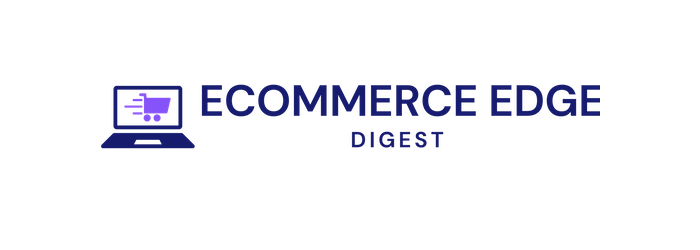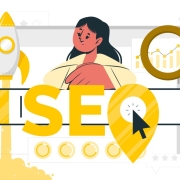Mastering Up Selling: Boost Value Without Pushing Too Hard

In today’s competitive marketplace, the art of upselling has evolved far beyond mere persuasion — it’s about enhancing the customer’s experience while subtly increasing value. Mastering upselling means finding the delicate balance between offering meaningful upgrades and respecting the purchaser’s boundaries, ensuring they feel supported rather than pressured. This article explores how businesses can skillfully navigate this balance, turning every prospect into a win-win moment where customers walk away satisfied and sales see a natural boost. Welcome too the nuanced world of upselling done right.
Understanding Customer Needs to Tailor Your Upselling Approach
To craft an effective upselling strategy, it’s essential to dive deep into the unique preferences and pain points of your customers. Recognizing what truly matters to them allows you to suggest enhancements that feel like natural extensions of their original purchase, rather than intrusive sales pitches. This approach transforms upselling from a pushy tactic into a personalized service, fostering trust and increasing the likelihood of a positive response. By leveraging data such as past purchase behavior, browsing patterns, and direct feedback, you can anticipate needs and tailor your recommendations with precision.
Consider focusing on these key aspects when aligning your upsell offers:
- Relevance: Pitch options that complement what the customer already values.
- Timing: Introduce upgrades at moments of engagement, like checkout or post-purchase review.
- Value-Add: Highlight how the upsell enhances their original choice, such as extended warranty or premium features.
- Clarity: Be clear about benefits and avoid overwhelming jargon.
| Customer Indicator | Suggested Upsell | Customer Benefit |
|---|---|---|
| Frequent Buyer | Loyalty Program Upgrade | Exclusive Discounts + Early Access |
| First-time Purchaser | Product Bundle Offer | Convenience + Cost-saving Combo |
| High-engagement User | Premium Support Package | Priority Help + Faster Resolutions |
Building Genuine Value Propositions That Resonate
Understanding what truly matters to your customers is the cornerstone of developing offers that feel both relevant and valuable. Rather of focusing on features, emphasize the *benefits* and *solutions* your upsell introduces to their existing experience. Effective value propositions speak directly to the customers needs and desires, making the added purchase feel like a natural extension rather than a pushy attempt to increase sales. Hear, clarity and empathy are your best tools — show how your recommendation can enhance productivity, save time, or enrich enjoyment without overwhelming the customer.
Consider these key elements when crafting your proposition:
- Personalization: Tailor your offers based on the customer’s history and preferences.
- Clarity: Clearly communicate what extra value they gain with the upsell.
- Relevancy: Ensure the upsell complements or improves the original purchase.
- Risk Reduction: Incorporate guarantees or trials to alleviate hesitation.
| Value Element | Customer Benefit |
|---|---|
| Extended Warranty | Peace of Mind for Longer |
| Premium Support | Faster, Dedicated Assistance |
| Advanced Features | Enhanced Productivity |
| Bundle Discounts | Cost Savings on Complementary Items |
Techniques for Seamless Integration of Upselling in the Sales Process
Integrating upselling naturally within your sales conversations is an art that hinges on understanding customer needs and timing. Instead of presenting the upsell as an added expense, position it as a logical enhancement that amplifies the original purchase’s value. focus on educating the buyer about benefits rather than just pushing products. Techniques like asking open-ended questions about their goals or challenges can organically reveal opportunities to suggest a higher-tier product or complementary service. A subtle shift from a transactional pitch to a consultative dialog creates trust — turning upselling moments into genuine value exchanges.
Effective integration also means tailoring your approach with precision. Use customer data and purchase history to customize recommendations, ensuring relevance and increasing acceptance. Visual aids, such as comparison charts, can simplify decision-making and highlight clear advantages of the upsell. Below is a fast reference table illustrating effective upsell triggers and corresponding customer signals:
| Upsell Trigger | Customer Signal |
|---|---|
| Extended Warranty or Service Plan | Concerns About Product Longevity or Heavy Usage |
| Upgraded Features/Model | Interest in High Performance or Latest Technology |
| Bundle or Package Deal | Looking for Convenience or Thorough Solutions |
| Complementary Accessories | Seeking Enhanced User Experience or Personalization |
Remember, subtlety is key — upselling should feel like a helpful suggestion rather than a sales tactic, making the customer’s journey smoother and more rewarding.
Balancing Persuasion and Respect to Maintain Customer Trust
Striking the right chord between persuasion and respect is an art every savvy upseller must master. Rather than overwhelming customers with aggressive pitches, focus on listening attentively to their needs and offering solutions that truly enhance their experience. This approach not only positions your suggestions as helpful but also builds a foundation of trust, encouraging customers to engage willingly without feeling pressured. Remember, upselling is about enriching value, not just increasing numbers.
To keep the balance intact, consider integrating subtle persuasion techniques such as:
- Highlighting benefits relevant to individual needs
- Offering choices instead of a single hard sell
- Respecting their decision even if they decline
These steps demonstrate respect for the customer’s autonomy while nudging them towards making decisions that add true value. Below is a quick comparison illustrating the impact of balanced persuasion versus aggressive selling:
| Approach | Customer Response | Long-term Outcome |
|---|---|---|
| Balanced Persuasion | Engagement, Openness | Loyalty, Positive Word-of-mouth |
| Aggressive Selling | Defensiveness, Reluctance | Lost Trust, Churn |
Final Thoughts…
Mastering the art of upselling is less about pressure and more about perspective. By genuinely understanding your customer’s needs and offering thoughtful enhancements, you create opportunities that feel natural rather than forced. Striking this delicate balance not only boosts value for your business but also builds trust and loyalty with your audience. Remember, successful upselling is an invitation to elevate the experience — one that benefits both sides without ever crossing the line into hard selling. Embrace this approach, and watch your relationships and revenue grow hand in hand.






![[Aggregator] Downloaded image for imported item #1426](https://ecomedgedigest.com/wp-content/uploads/2025/11/IMG_1083-1024x614-1-180x180.jpeg)



Leave a Reply
Want to join the discussion?Feel free to contribute!